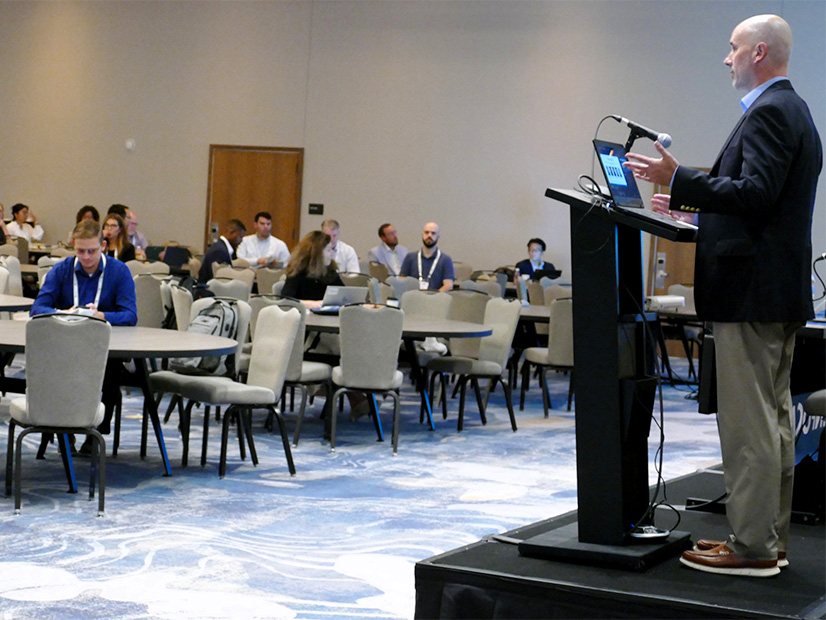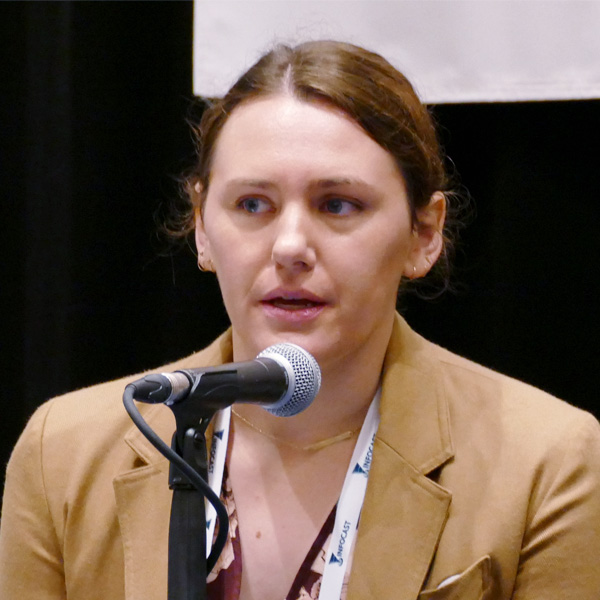
SAN ANTONIO — Thomas Gleeson, chair of Texas’ Public Utility Commission, has seen it all during his tenure at the PUC.
Named the commission’s executive director in 2021 about a month before a winter storm nearly collapsed the ERCOT grid, Gleeson saw the commissioners whittled in numbers from three to two, then one and finally none as they each resigned under withering criticism in the storm’s aftermath. The commissioners’ numbers have grown to five since then due to legislation passed after storm, with Gleeson appointed as chair in January.
Everything went smoothly for Gleeson and the PUC until Hurricane Beryl caught CenterPoint Energy off-guard in July and then an apparently fraudulent generation project was temporarily included in a grant program for $5 billion in state funds. (See CenterPoint Energy Still in Eye of the Storm and Texas PUC Rejects Possible ‘Fraudulent’ Loan Application.)
Dealing with the fallout of those two events has been added to the commission’s full plate, which includes finishing a market redesign and working to approve enough transmission to meet Texas’ growing industrial demand and deciding whether to use 765-kV facilities in that effort.
“The timeline of my time at the PUC has been quite interesting,” Gleeson told attendees during Infocast’s Texas Clean Energy summit, held Sept. 24-26.
“Transmission in this state is something that we haven’t talked a lot about in recent history, because we’ve been focused on market design,” he said. “I tell the governor and the other elected officials, ‘If you want this state to continue to be the economic center for the country and for the globe, you have to invest in infrastructure, water infrastructure, health communication infrastructure, electric infrastructure.’ Those things have to be done congruently, because you cannot have one without the other.”
Gleeson said demand is increasing in Texas because data centers and crypto miners are being added to the industrial base. ERCOT said earlier this year it expects an additional 150 GW of load by 2030, although not all eventually will be interconnected.
“So, what does that mean? It means a lot of companies, a lot of businesses plan to move here,” Gleeson said, noting some of that is crypto mining that “may show up or may not show up.”
“The load growth is something no other ISO in this country is seeing,” he said. “You hear a lot about the size of our state … so people automatically assume load growth is happening because people are moving within ERCOT. That’s not the truth … load growth on the residential side actually remains really flat. The increase in load is because of commercial and industrial customers coming here.
“That causes its own set of challenges, right?” Gleeson added. “You have residential customers that are paying a lot of the transmission costs, and those transmission costs are caused by non-residential customers, so I think that’ll be another story.”
Until then, Gleeson argues, Texas needs an energy expansion, not an energy transition.
“In this state with our load growth, you need an energy expansion,” he said, nodding to a slide that included ERCOT’s current fuel mix. “These percentages are not nearly as important to me as the underlying data, the total megawatts. I want more of all this to last the summer. If you look and analyze ERCOT data, you’ll see that on multiple occasions, solar and batteries saved us. We also need more gas-fired generation because I have days that no one else sees where we are really thin.”
Market Participants Pan PCM
Several panelists panned the PUC’s proposed performance credit mechanism (PCM), which was selected from among five other potential market designs in 2023.
The PCM has been criticized as favorable to thermal generators. It would reward them with credits based on their performance during a determined number of scarcity hours. Those PCs must be bought by load-serving entities, based on their load during those same hours, or exchanged by LSEs and generators in a voluntary forward market. (See Texas PUC Submits Reliability Plan to Legislature.)
“There’s been a lot of discussion about who can participate in the PCM,” Black Mountain Energy Storage’s Kevin Hanson said. “I think it’s very important that it has to be technology neutral, that any resource that can deliver those obligations and needs should be able to participate.”
Bob Helton, Engie North America’s vice president of government and regulatory affairs, pointed out that an early analysis of the PCM included renewables.
“By taking the renewables out of there, it does increase the cost,” he said, agreeing the PCM needs to be technology neutral. He also urged patience because it could have a bearish effect on real-time energy pricing. “We don’t want to end up with a PCM market with a large percentage of revenue coming through there and overtaking the energy market as a revenue source. We’ve seen that in capacity markets and other markets,” he added.
“I think what’s been lost in a lot of the discussions about an energy-only market is that it functions via scarcity,” Lightsource’s Emily Mullins, on another panel, said. “Scarcity pricing is important because it signals to developers when, where and what type of resource they need to build. However, since Winter Storm Uri, what we’ve seen is there’s snipping at the edges of the energy only market. So, we’ve ended up in this interesting situation where, by name, we’re in an energy-only market, but we’re sort of riding the fence between an energy-only market and the capacity market.”
Gleeson, who was the PUC’s executive director when it approved the PCM, referred to the design as a “novel approach.” He said given that, the PCM should be placed on the back end of other market changes.
“My feeling is, and I think my colleagues share this feeling, is that we have a number of tools at our disposal,” he said. “We should try to see if we can meet our reliability goals with those tools before we look to implement something that’s new and novel and that we don’t really know how it interacts with the rest of our market.”
Texas Eyes More Nukes
Constellation Energy’s Casey Kelley, vice president of state government affairs in the South, appeared at the conference on the heels of his company’s announcement that it plans to re-open Three Mile Island’s Unit 1 — not the one involved in a 1979 partial nuclear meltdown — as part of a power purchase agreement with Microsoft. (See Constellation to Reopen, Rename Three Mile Island Unit 1.)
Shannon McGriff, executive director of The Energy Professionals Association and moderator of Kelley’s panel, said she was with the Constellation executive two days before the announcement.
“So, we know you can keep a secret,” she told Kelley.
“I think nuclear is going to be a big topic in Texas this time around, not because anybody’s going to build a new AP 1000 [plant] or even [small modular reactors] in the short term, but I do believe there will be conversation about how we set up the framework to make Texas a leader in that space,” Kelley said, looking ahead to 2025’s legislative session.
He has a supporter in Gleeson, who is waiting on a task force’s report on small modular reactors (SMRs) due at the end of the year. Texas leaders hope the work will position the state as a leader in nuclear energy. The state already hosts two nuclear plants and their four reactors; each plant has 5,000 MW of installed capacity.
“My feeling is if you care about net zero emissions and you care about reliability, you have to care about nuclear. I don’t think the math works for where people are trying to go [meeting future demand] without adding nuclear power,” Gleeson said. “I think increased nuclear has to be a part of our energy future to meet our demand.”



